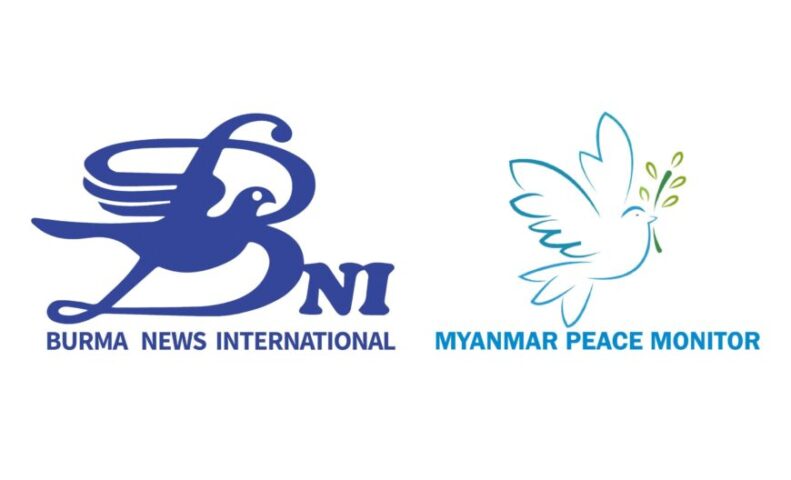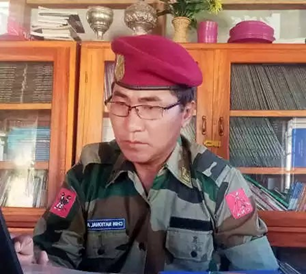The first Chinland Council Conference was successfully held at the Chin National Front Headquarters in Victoria Base from 4 to 7 December, and the Chin-drafted Chin State Constitution was approved.
The Chinland Council was established with the aim of building a Chin State with the guarantee of national self-determination, political and national equality and the establishment of a guaranteed federal democratic system. The Chinland Council will form the legislature, the administration, and the Supreme Court within 60 days.
The conference was attended by 14 regional and township-based groups from three clusters, excluding Chin National Council (Mindat) (CNC-Mindat/CDF-Mindat), Chin National Organization/Chin National Defense Force (CNO/CNDF) and Zomi Federal Union/People’s Defense Force-Zoland, and Kanpetlet Township Council/CDF-Kanpetlet. The Interim Chin National Consultative Council (ICNCC) also issued a statement on 7 December that it will not hand over its duties and responsibilities to any organization.
KMG conducted an interview with Salai Htet Ni, 1st Secretary of the Chinland Council, to find out what development the establishment of the Chinland Council and Chin State administrative mechanisms by the Chinland Council Conference will bring amid the intensifying political situation and revolutionary momentum in Chin State.
Q: How was the first Chinland Council conference held? What kind of decisions and endorsements were you able to make?
A: The Chinland Council conference was successfully held for the first time and Chinland Council was formed by CNF cluster, MPs elected in the 2020 election participating in the revolution, and 17 township and regional administrative groups. At the conference we were able to adopt the constitution that our Chin people have written ourselves. We were also able to elect the steering committee. From there, we will form these three branches – the legislature, administration, and judiciary – within 60 days.
In forming this administration, we have designated it the Chin State government, and the regional government, and have decided to continue building the Chin State revolutionary government.
Q: What are some of the unique aspects of the Chin constitution?
A: If you ask what are unique aspects, in the constitution that we Chin people have written ourselves, we want a system of governance based on federal democracy that is adapted to fit the situation of existing national and state level governments that we envision. That is the unique aspect of this constitution that aims to build a system of governance led and shaped by the public themselves through democratic process.
Q: What kind of system do you envision to build Chin State based on this constitution? What kinds of administrative mechanisms will Chin people be operating under in Chin State?
A: The main thing is we will build a system of governance based on federal democracy. We will follow systems and models of federal democracy practiced in other federal democratic countries that are compatible with us Chin people. In forming this government there will be a Chin State chief minister, under whom there will be ministries. For law-making, those elected in 2020 election and participating in the revolution will form a separate legislature. The judiciary will also be a separate, fully independent judiciary that we will build.
Q: We heard that the Chinland Council was endorsed and formed from the Chinland Counicl conference. How is the Chinland Council structured?
A: The Chinland Council is made up of six leaders – one chair, vice chairs 1 and 2, secretary and secretaries 1 and 2 nominated from each of the three clusters. We coordinated and formed it as such. The Chinland Council is made up of 23 members from the steering committee. Among the 23, there are 3 persons each nominated from the three clusters, with three chairs in the executive committee, and three secretaries. Also, the council members are from the three clusters – CNF, elected MPs, township-based and regional administrative groups. There are 130 to 140 council members. From this council, we’ll form the three branches – the legislature, administration, and judiciary. These legislature, administration and judiciary are accountable to the Chinland Council. It is formed in this structure.
Q: Earlier you mentioned the Chinland Council is made up of six leaders. Who are they?
A: The six leaders are – the chair position is held by Pu Zing Cung. Pu Zing Cung is currently the chair of the CNF. Vice chair 1 is Salai Min Nyo, who is from the MP cluster. The Vice chair 2 position held by Salai Pu Bawi Kung nominated from the township cluster. The secretary position is held by Salai Paul, who is from the township cluster. The Joint Secretary 1 is myself, Salai Htet Ni, from the CNF cluster. Joint secretary 2 is Pu Tial Ling, who is from the MP cluster.
Q: We heard that the legislature, administration, and supreme court will be formed within 60 days from the Chinland Council. Could you explain how these will be formed?
A: According to the constitution the legislature, administration and judiciary will be formed within 60 days from the Chinland Council. To be able to form these, from the council we have assigned 31 people to the nominations committee. From the three clusters, persons were nominated and they will elect from among them. Once elected it will be endorsed by the council. In this way within 60 days we will continue to implement as such. The legislature will handle all law-making affairs. The administrative body will handle administration affairs. The judiciary will also establish a fully independent judiciary system.
Q: The revolution is gaiing momentum. In such a time, you were able to hold the first ever Chinland Council conference and establish Chinland Council and Chin administrative mechanisms. How will this impact or transform the ongoing Chin armed revolution?
A: The Spring Revolution is now into three years and our position is that military affairs is the priority. Our goal is to completely abolish the military dictatorship and establish a federal democratic union. To synergistically establish these, we need to synergistically develop both military and political affairs, be mutually beneficial. On the political front, currently strengthening the administration will benefit the public. We have chosen the path of a people’s revolution with public support, and we want to address the people’s difficulties through our own administration. The key point is to strengthen both politics and the military, and unite Chin State cohesively. The Chinland Council is a stepping stone towards building our envisioned genuine federal democratic government.
Q: Will the towns currently controlled by Chin forces operate under the upcoming constitution and Chin administrative mechanisms? What plans are there?
A: Right now, about 75 percent of Chin State is under public control. The military regime’s sphere of operation is limited to the town centers. Where we are practically implementing governance, local and regional administration and defense forces have long existed. We will work to consolidate these. Such implemented town and regional administration will be unified into a national Chinland-level administration system. Militarily, there will be a Defense Minister under the Chin State Government. Under the Defense Ministry, there will be the Chin National Army, regional defense forces and so on, unified militarily. The Defense Ministry under the Chin State Government, Security and other ministries will be expanded and constituted as needed. Our current plan is to operate the administration system with the Defense Ministry and 15 other ministries.
Q: How many groups attended the first Chinland Council conference?
A: The Chin National Conference was held by three clusters – CNF, elected MPs participating in the revolution, and 17 regional and township-based administrative groups attended the conference. 14 of the 17 township-based groups attended. Three groups were unable to attend. These three groups also include MPs. That’s why only around 90% were able to attend the conference.
Q: There were also groups who didn’t attend this Chinland Council conference. What policies do you have regarding those groups?
A: Three groups couldn’t attend. MPs from those three groups couldn’t attend either. We have kept the door open for them to participate. The negotiating committee negotiated with them from the beginning. There were also talks about a meeting after the conference. That’s why we have kept the door open for them to participate.
Q: In the Chinland Council constitution, it includes taking over duties and responsibilities from the ICNCC. However ICNCC released a statement they will not handover duties and responsibilities to any organization. What is your view on this?
A: ICNCC members currently include MPs who are from the three groups who haven’t been able to attend yet. So rather handover or not, we need to know what work needs to be done, what the situation is on the ground. If we look at it, five clusters formed the ICNCC. But there were many impractical aspects so CNF pulled out. Because ICNCC was formed with five clusters, if one or more cluster pulls out, we need to review whether the ICNCC is still practical. And in their statements, they say they will not hand over responsibilities to anyone. Handover or not, what is most needed during the revolutionary period is practical work implementation on the ground. That is what I particularly want to say.
Q: How will cooperation be between Chin State administrative mechanisms, NUG and NUCC etc?
A: From the beginning in forming the Chinland Council, most of the MPs, including myself from among the ICNCC members participated and formed the council. ICNCC, NUCC and NUG are aware of this. What I want to say is in actual situation on the ground, what work needs to be done and how, NUCC and NUG are already aware of the situation. So coordination is already happening between them accordingly. It is not possible not to coordinate. Coordination has already been happening.
Q: What else would like to add?
A: I don’t have anything more to add.
Sent by KMG.

